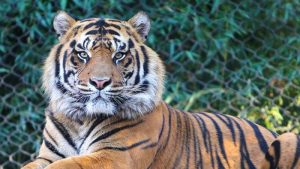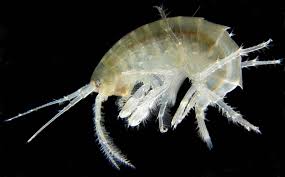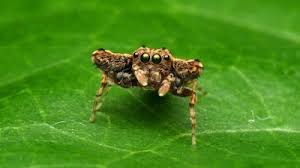Today’s Current Affairs: 6th November 2025 for UPSC IAS exams, State PSC exams, SSC CGL, State SSC, RRB, Railways, Banking Exam & IBPS, etc
Table of Contents
Nagarjunasagar-Srisailam Tiger Reserve:

The forest department is preparing to launch the next round of tiger census in the Nagarjuna Sagar Tiger Reserve (NSTR).
- It is located in the Nallamala hill ranges (an offshoot of the Eastern Ghats) of Andhra Pradesh.
- It is one of the largest tiger reserves in India, spreading over an area of 3,728 sq km.
- It hosts the largest tiger population in the Eastern Ghat landscape.
- It is named after two major dams in the area, Nagarjuna Sagar Dam and Srisailam Dam.
- Two wildlife sanctuaries, namely Rajiv Gandhi Wildlife Sanctuary and Gundla Brahmeswaram Wildlife Sanctuary (GBM), constitute the NSTR.
- The river Krishna traverses through this reserve for a linear distance of around 270 kilometers.
- The reserve holds significant importance with ancient temples like the Mallikarjuna Swamy Temple at Srisailam and several archaeological sites, including Buddhist relics from the Nagarjuna Konda area.
- It consists of plateaus, ridges, gorges, and deep valleys.
- Tropical dry deciduous forests having an undergrowth of bamboo and grass.
- The habitat has several endemics like Andrographis nallamalayana, Eriolaena lushingtonii, Crotalaria madurensis Var, Dicliptera beddomei, and Premna hamiltonii.
- Top faunal species include Tiger, Leopard, Wolf, Wild Dog and Jackal.
- The prey species are represented by Sambar, Chital, Chowsingha, Chinkara, Mouse Deer, Wild boar, and Porcupine.
- The river Krishna has Muggers, Otters and Turtles.
Amphipods:

Two new species of marine amphipods, Grandidierella geetanjalae and Grandidierella khambhatensis, have been found by a team of researchers from Chilika and the Gulf of Khambhat, recently.
- Amphipods are a type of small crustacean.
- They are related to crabs, lobsters, and shrimp.
- They can be found in almost all water environments.
- They live in the ocean, in fresh water, and even on land.
- The name ‘amphipoda’ means “different-footed.”
- This is because they have many different kinds of legs.
- Unlike some other crustaceans, their legs are not all the same.
- There are over 7,000 known species of amphipods. Most of them belong to a group called Gammaridea.
- Amphipods can be very tiny, about 0.1 centimeters (0.04 inches) long. But some can grow quite large, up to 34 centimeters (13 inches).
- Most amphipods eat tiny bits of dead plants and animals. Some are also scavengers, eating what they find.
- They live in many places.
- About 750 species live in caves.
- Some amphipods are terrestrial animals, like sandhoppers.
- The largest amphipods live deep down on the sea floor. They can be found seven kilometers (about 4.3 miles) deep.
Grandidierella geetanjalae and Grandidierella khambhatensis:
- They are two new species of marine amphipods.
- Grandidierella geetanjalae was collected from the Chilika lagoon near Rambha in Ganjam district, Odisha.
- Grandidierella khambhatensis was collected from the Gulf of Khambhat, Gujarat.
- Both species measure between 5.5 and 6 mm in length.
- They are detritivorous, feeding primarily on organic matter and playing an important role in maintaining ecosystem health by contributing to natural cleaning processes.
Pilia malenadu:

A team of researchers exploring biodiversity in the Western Ghats recently discovered a new species of spider named Pilia malenadu.It is a new species of spider.
- It belongs to Pilia, a genus of jumping spiders.
- It was discovered in Madhugundi in the Mudigere taluk of Chikkamagaluru, Karnataka, at the foothills of the Western Ghats.
- The researchers named it “Pilia malenadu”, to give credit to the place it was found.
- The discovery is significant because the last time a species of spiders belonging to the pilia genus was discovered was about 123 years ago (1902) in Kerala.
- Further, the researchers, for the first time, have found both male and female spiders of the species.
- These spiders were found in only two plant species — Memecylon umbellatum and Memecylon malabaricum.
- In fact, the spiders were found concealed between the leaves of these plants.
Silicon Carbide:

The Chief Minister of Odisha performed the groundbreaking ceremony for the country’s first end-to-end silicon carbide semiconductor production plant.
- Silicon Carbide is a synthetically produced crystalline compound of silicon and carbon.
- Its chemical formula is SiC and it is the most widely used non-oxide ceramic.
- It was discovered by the American inventor Edward G. Acheson in 1891.
- It is the hardest ceramic material and has excellent thermal conductivity, low thermal expansion.
- It is also classed as a semiconductor, having an electrical conductivity between that of metals and insulating materials.
- It has excellent mechanical properties, and excellent resistance to wear and oxidation.
- Its primary application is as an abrasive because of its high hardness, which is surpassed only by diamond, cubic boron nitride, and boron carbide.
- It is used in refractory linings and heating elements for industrial furnaces, in wear-resistant parts for pumps and rocket engines.
- It is used in semiconducting substrates for light-emitting diodes.
- It is a promising ceramic material with excellent thermo mechanical characteristics.
Melatonin : Concern

Concerns have been raised by doctors about melatonin supplements being taken by a large number of people with no medical supervision.
- Melatonin is a naturally-occurring hormone in human beings that controls sleep and wake cycles in our daily lives.
- Its levels rise in the evening, helping to promote sleep.
- It is secreted by the pineal gland in human body.
- Pineal gland releases the most melatonin when there’s darkness and decreases melatonin production when you’re exposed to light.
- Melatonin can also be made synthetically in a lab and sold as a dietary supplement. It’s called exogenous melatonin.
- Those people whose sleep is not optimal and who travel frequently across time zones prefer melatonin supplements.
- Overuse of melatonin may cause headaches, hormonal changes, or mood swings, disturbing the very rhythm and sleep cycle.
Integrated Sohra Tourism Circuit:

The Union Minister for Development of North Eastern Region laid the foundation stone for the Integrated Sohra Circuit Development under the Prime Minister’s Development Initiative for North Eastern Region (PM-DevINE) scheme.
- It is jointly developed by the Ministry of DoNER and the Government of Meghalaya.
- It aims to transform Sohra into a multi-day experiential tourism destination rooted in sustainability and local livelihoods.
- Key Components of Integrated Sohra Tourism Circuit:
- Sohra Experience Centre: It will serve as the cultural nucleus of the circuit, showcasing Meghalaya’s diverse tribal heritage through amphitheatres, rain experience parks, art galleries, and craft pavilions.
- Supporting projects: It includes Nohkalikai Falls precinct, Mawsmai Eco Park, Shella Riverside Development, and Wahkaliar Canyon with adventure tourism.
PM-DevINE scheme:
- The Prime Minister’s Development Initiative for North Eastern Region (PM-DevINE), was launched in 2022 as a Central Sector scheme, with 100% Central funding.
- The scheme has an outlay of Rs.6,600 crore for the 4 year period from 2022-23 to 2025-26.
Pampadum Shola National Park:

The Pampadum Shola National Park which was once dominated by invasive Australian wattles is undergoing a remarkable transformation and its grasslands are being restored, reviving streams and native species.
- It is located in the eastern part of Southern Western Ghats of
- It is the smallest national park of Kerala and shares a border with Dindigul district of Tamil Nadu.
- It was declared a national park in 2004.
- It is the southernmost shola–grassland mosaic in the Western Ghats, one of the world’s oldest mountain systems predating the Himalayas.
- It is a part of Palani hills stretched up to Vandaravu peak.
- It connects the Eravikulam National Park and the Palani Hills, providing a free range for many animals.
- Pampadum Shola Forests receive heavy rain in the North-East monsoon.
- The terrain is undulating with hillocks of varying heights. The altitudes range between 1600-2400 m.
- The park’s unique shola forests are a mix of grasslands and patches of tropical montane forests. The park is rich in medicinal plants, orchids, ferns, and other native species.
- Fauna:Nilgiri marten, Kerala laughing thrush, black-and-orange flycatcher etc.
Encephalomyocarditis Virus:

An autopsy report from the Indian Veterinary Research Institute revealed that lone African elephant at the National Zoological Park in Delhi died in due to the rare rodent-borne virus — encephalomyocarditis virus (EMCV).
- It is a non-enveloped, positive-sense, single-stranded RNA virus that is part of the Cardiovirus genus and Picornaviridae family.
- It is the causative agent of encephalomyocarditis (EMC) infection in swine and other mammals.
- African elephants are particularly susceptible to the virus, with outbreaks reported worldwide in captivity and in the wild.
- EMCV is a zoonotic disease, therefore humans are susceptible to infection. Most infections in humans are asymptomatic.
- The virus can be transmitted by food or water contamination caused from feces or urine of a rodent species.
- Symptoms of EMCV infection in humans can include fever, headache, muscle aches, nausea, vomiting, and in severe cases, neurological symptoms like confusion and seizures.
- Hosts of EMCV: Pigs, non-human primates, zoo animals, and various wild species can be affected.
- Treatment: Supportive care to manage symptoms and complications, with no specific treatment available.
Asia-Pacific Economic Cooperation (APEC) Summit 2025:

The Asia-Pacific Economic Cooperation (APEC) Summit 2025, held in Gyeongju, South Korea, concluded with the adoption of the APEC Leaders’ Gyeongju Declaration (2025), reaffirming regional cooperation, digital transformation, and inclusive economic growth.
Highlights:
- Adoption of the Gyeongju Declaration (2025): The declaration reaffirmed APEC leaders’ commitment to inclusive economic growth, recognising the transformative impact of Artificial Intelligence (AI) and demographic shifts on labour markets.
- It outlined three priorities:
- Building the world’s most dynamic and interconnected regional economy.
- Preparing the region for digital and AI transformation
- Addressing shared challenges and ensuring growth benefits all
- APEC Artificial Intelligence (AI) Initiative (2026-2030): The AI initiative seeks to drive inclusive, resilient growth by boosting innovation, cooperation, capacity building, and sustainable, energy-efficient AI development.
- Framework for Demographic Changes: Adopted by APEC, it addresses the region’s challenges of ageing populations, declining birth rates, and rapid urbanisation.
- It urges people-centred, intergenerational policies for resilient and inclusive growth, and promotes shared policy responses, social innovation, stronger employment, fiscal resilience, and a “silver economy” for ageing populations.
- Strengthened Economic and Technological Cooperation: China–South Korea renewed a currency swap and signed a cybersecurity MoU, US–China talks on the sidelines of the summit signaled easing tensions with plans to restart trade talks and cut select tariffs.
- Support for Inclusive, Rules-Based Multilateralism: Leaders reaffirmed the Putrajaya Vision 2040, stressing free and fair trade, predictable investment, and cooperation through multilateralism over fragmentation.
- Putrajaya Vision 2040 is a long-term strategic plan adopted by the APEC in 2020 to foster an open, dynamic, resilient, and peaceful Asia-Pacific community.
APEC :
- It was founded in 1989, is a regional forum of 21 economies that promotes balanced, inclusive, sustainable, and innovative growth while advancing regional economic integration across the Asia-Pacific.
- It uses the term “economies” instead of “countries” to stress economic cooperation over political representation.
- APEC works to ease the movement of goods, services, investments, and people by streamlining customs, improving business conditions, and aligning regional regulations and standards to boost trade and integration.
- Members: Australia, Brunei Darussalam, Canada, Chile, China, China, Indonesia, Japan, Republic of Korea, Malaysia, Mexico, New Zealand, Papua New Guinea, Peru, the Philippines, Russia, Singapore, Chinese Taipei, Thailand, US, and Viet Nam.
IPPB–EPFO MoU for Jeevan Pramaan Services:

India Post Payments Bank (IPPB) has signed an MoU with the Employees’ Provident Fund Organisation (EPFO) to provide doorstep Digital Life Certificates (Jeevan Pramaan) services for pensioners under the Employees’ Pension Scheme, 1995 a key move toward inclusive and technology-driven pension delivery.
- Jeevan Pramaan is an Aadhaar-based, biometric-enabled Digital Life Certificate (DLC) for pensioners.
- It verifies the pensioner’s existence and ensures continuous pension credit into their bank account.
- Eligibility: Pensioners from the central, state, or any other government agency are eligible to use this service.
- IPPB, launched in 2018, operates under the Department of Posts, Ministry of Communications, and is headquartered in New Delhi, India.
- It aims to provide affordable and accessible banking services, especially in rural and underserved areas, by using India Post’s vast network to deliver doorstep financial inclusion across the country.
Foreign Liabilities and Assets (FLA) Census 2024-25:

According to the Reserve Bank of India’s 2024–25 Foreign Liabilities and Assets (FLA) census, the US and Singapore together contributed over one-third of India’s total Foreign Direct Investment (FDI), reaffirming their position as India’s top investment partners.
- Top Investors: The US (20%) and Singapore (14.3%) together contributed over one-third of total FDI, followed by Mauritius, the UK, and the Netherlands.
- Foreign Dominance: More than 75% of FDI-reporting firms were foreign subsidiaries, reflecting strong overseas ownership and technology inflows.
- Sectoral Focus: Manufacturing attracted the highest FDI (48.4% market value), followed by services, aligning with India’s industrialisation goals.
- Rising Inflows: Total FDI stock rose to Rs 68.75 lakh crore in FY25, up from Rs 61.88 lakh crore in FY24, marking an 11.1% annual growth. showing steady confidence in India’s economy.
- Outward Expansion: Outward Direct Investment (ODI) (domestic firm expands its operations to a foreign country) stood at Rs 11.66 lakh crore, with top destinations being Singapore, US, UK, and Netherlands.
- ODI growth (17.9%) outpaced FDI growth (11.1%), reducing the inward-to-outward DI ratio from 6.3 to 5.9 times year-on-year.
- Industrial Strength: Non-financial companies held over 90% of total FDI equity, showing dominance of core sectors.
Tractor Emission Norms (TREM):

Farmers’ organisations have opposed the Union government’s proposal to implement Tractor Emission Norms (TREM) Stage V for tractors from 1st October 2026, urging that the rules would force farmers to buy new tractors, increasing debt and economic hardship.
- TREM: These are pollution-control standards set by the government to regulate and reduce harmful exhaust emissions from agricultural tractors and farm machinery.
- They are similar to Bharat Stage (BS) norms for other vehicles but are specifically designed for agricultural equipment to limit pollutants like NOx, particulate matter (PM), hydrocarbons, and carbon monoxide.
- TREM Stages: India introduced tractor emission norms in 1999, followed by Bharat (Trem) Stage II in 2003 based on the Expert Committee on Auto Fuel Policy (Mashelkar Committee, 2002), and Bharat (Trem) Stage -III in 2005.
- TREM-IIIA (2010–11) brought horsepower (HP)-based limits, and TREM-IV was implemented in 2023 for tractors above 50 HP to further curb emissions.
The Research, Development and Innovation (RDI) Scheme:

Prime Minister of India inaugurated the Emerging Science & Technology Innovation Conclave (ESTIC) 2025 at Bharat Mandapam, New Delhi, and launched the ₹1 lakh-crore Research, Development, and Innovation (RDI) Scheme Fund to boost private investment in high-risk, high-impact R&D projects.
- India is making a decisive shift toward an innovation-driven economy, strengthening collaboration between academia, industry, and government to pursue high-risk, high-impact technologies.
- GERD trend: The nation’s Gross Expenditure on R&D has doubled from ₹60,196.75 crore in 2010–11 to ₹1,27,380.96 crore in 2020–21, though it still remains below 0.7% of GDP, far lower than global leaders.
- The Central Government contributes about 43.7% of total R&D spending, with the government sector accounting for 64% and the private sector 36%, showing the need for greater corporate participation.
- Human capital: India awarded 40,813 doctorates in 2018–19, with 60% in Science and Technology, ranking third globally in S&E PhDs and highlighting strong potential for research expansion.
- Patent filings in India tripled from 24,326 in 2020–21 to 68,176 in 2024–25, reflecting a surge in domestic innovation and intellectual property creation.
The Research, Development & Innovation (RDI) Scheme:
- A landmark ₹1 lakh-crore corpus, launched on November 3, 2025, to fund and refinance private-sector research, development, and innovation (RDI) projects through long-tenure, low or zero-interest loans—promoting bold, high-risk scientific ventures.
- Aim: To de-risk high-TRL and high-impact projects, attract private capital into frontier technologies, and accelerate the lab-to-market transition in areas critical to national competitiveness and self-reliance.
QS Asia University Rankings 2026:

Prime Minister of India hailed India’s record performance in the QS Asia University Rankings 2026, where 294 Indian universities were listed — the highest ever.
- The QS Asia University Rankings is an annual regional assessment that evaluates Asia’s leading higher education institutions based on academic reputation, employability, research productivity, and international outlook.
- Published by: Compiled by Quacquarelli Symonds (QS), a UK-based higher education analytics firm, known globally for its QS World University
Top 5 Indian Institutions (QS Asia University Rankings 2026):
- IIT Delhi – Rank 59 (fell from 44th in 2025)
- IISc Bengaluru – Rank 64
- IIT Madras – Rank 70
- IIT Bombay – Rank 71
- IIT Kanpur – Rank 77
Top 5 Universities in Asia (QS Asia University Rankings 2026):
- The University of Hong Kong – Rank 1
- Peking University (China) – Rank 2
- Nanyang Technological University (Singapore) – Rank 3
- National University of Singapore (NUS) – Rank 3 (joint)
- Fudan University (China) – Rank 5
Bandipur Tiger Reserve:

As per the order by the Karnataka State Minister for Environment, Ecology and Forests, one late evening safari trip – each in jeep and bus – are being stopped at Bandipur Tiger Reserve (BTR), in the first phase.
- It is situated in the Mysore and Chamarajanagar revenue districts of southern Karnataka.
- It is located at the tri-junction area of the States of Karnataka, Tamil Nadu, and Kerala.
- Geographically, it is an “ecological confluence” of the Western and Eastern Ghats.
- It was once a hunting ground for the rulers of the neighbouring kingdom of Mysore.
- It is part of the larger Nilgiri Biosphere Reserve, which is recognized as a UNESCO World Heritage Site.
- BTR is surrounded by Nagarahole Tiger Reserve (Tamil Nadu) in the North West (Kabini Reservoir separates the two), Mudumalai Tiger Reserve (Tamil Nadu) in the South, Wayanad Wildlife Sanctuary (Kerala) in the South West.
- It is surrounded by River Kabini in its north and River Moyar in its south.
- Bandipur has a typical tropical climate with distinct wet and dry seasons.
- It comprises diverse vegetation of dry deciduous to tropical mixed deciduous.
- It includes rosewood, Indian kino tree, sandalwood, Indian laurel, clumping bamboo, and giant clumping bamboo, etc
- It is a shelter for the largest population of wild Asian elephants in South Asia.
- It comprises other mammals such as the Bengal tiger, gaur, sloth bear, golden jackal, dhole, and four-horned antelope, etc.




